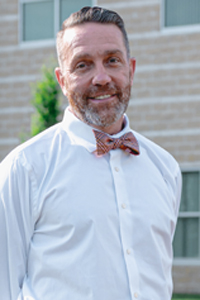How Can Public Health Agencies Fill the Needs Gap?
What follows is the second part of our Public Health Roundtable held Tuesday, Dec. 15 via Zoom. The final portion of the transcript will be published online tomorrow. You can also read the transcript in its entirety in the January 2021 edition of The Business Journal.
The participants were Dr. James Kravec, chief medical officer, Mercy Health-Youngstown and medical director for the Mahoning County Board of Health; Dr. Michael Bigham, chief quality officer for Akron Children’s Hospital and pediatric intensivist of its intensive care unit; Dr. George Garrow, chief medical officer of Primary Health Network and board member of the Buhl Regional Health Foundation; Erin Bishop, commissioner of the Youngstown Board of Health; Ryan Tekac, commissioner of the Mahoning County Board of Health; Wes Vins, commissioner of the Columbiana County Board of Health; and Sarah Lowry, director of Healthy Community Partnership, Youngstown.
The Business Journal: What specifically can the health care communities do, whether it’s from the health departments or the providers? What is needed to fill some of these gaps?
Bishop, Youngstown City Health District commissioner: We’ve been involved with Ryan [Tekac] at the Mahoning County Public Health and Mercy Health in regards to infant mortality. We’ve been working on that since 2012. For years, Ohio had the worst record for Black infant mortality. A Black baby born in Ohio had the worst chance of surviving to their first birthday than anywhere else in the country.
We woke up in 2012 and began working together and we have some wonderful programs through Akron Children’s, Mercy Health, the health departments.
We were seeing things change but it was a decrease in our White infant mortality. Unfortunately, we were still seeing an increase in Black infant mortality. We were like, “How can this be? We’re doing all these programs. We’re reaching the people, right?”
Or so we thought.
About 2018, coming together with all the health departments, we decided that we’re going to continue these great programs but we needed to shift our focus to the social determinants of health. In talking to community and what the people needed, the No. 1 thing that came up was food access. Which we’re tackling with the Healthy Community Partnership, transportation and then housing.
About transportation – it’s wonderful. I saw just this morning that WRTA [Western Reserve Transportation Authority] has extended to June 2021 its free transportation. They have been wonderful throughout this whole COVID-19 pandemic.
People can now get free transportation until 2021 but think about the people before who needed to get to their doctor offices. That wasn’t happening. We still need to work on that issue.
Then housing. When a mother is worried about where she’s putting her head down at night because she’s living in deplorable conditions or she can’t make the rent.
These are things that we have shifted our focus to. By the leadership of our local public health community and by working with our hospital systems, we’re hoping to see a difference. Because we just cannot continue down this path where our Black babies are dying at a rate three or four times greater than our White babies.
Garrow, chief medical officer, Primary Health Network: One thing that I’ve been trying to incorporate into our practice at the community health center is this: When we were students in medical school, we were asked what is the [patients’] chief complaint? We would begin the interaction by asking, ‘What’s the matter?”

Instead, today we try to incorporate and understand and address social determinants of health. Managing a hemoglobin A1C or making sure that a person’s cholesterol is well controlled may be relatively important to us. What matters to the person in front of us may be “I don’t know where I’m going to sleep tonight.’ Or “I don’t know how many more meals I’m going to have before I run out of food.”
Recognizing that the [patient’s] chief complaint and their agenda may be something very different than ours – we’re accepting, acknowledging and hearing what matters. [Then we’re] following through and making a referral and a resource to agencies like the Buhl Regional Health Foundation here in Mercer County or the Community Action Partnership in Mahoning County to connect individuals to resources that address those needs.
There’s nothing more frustrating than realizing that someone is having a social determinant concern and not being able to address it.
Collectively, organizations like the Community Action Partnership and the Buhl Regional Health Foundation can be the glue to bring these resources together. We’re very fortunate in our community to have those types of programs.
Lowry, Healthy Community Partnership: These organizations spotlight social determinants and health disparities, specifically how racism is impacting health outcomes. We’ve also seen a lot of communities coming together to recognize and declare racism as a public health crisis.
We’ve seen the shift in the way people are thinking about trying to solve these large systemic problems with programmatic solutions. Now we are seeing more communities thinking about how we can use policy as another tool in the toolbox, not to replace programs. We still need those.
How can we use the success stories and challenges that come through these kinds of programs to make the case to decision-makers about how and why some policies need to be adapted? We want to think about where resources are going.
Programs and organizations or institutions, like public health and health care, may need more resources. Because these are huge problems and no one organization is able to truly address them, as they should to reach the thousands of people affected.
The Business Journal: Then what policies need to be changed? How can these issues be resolved?
Garrow, chief medical officer, Primary Health Network: Follow the money. Historically, [health care has] been fee-paid for service. We’ve been rewarded for procedures and the use of high-tech diagnostic equipment, etc.
Relatively speaking, reimbursement and money for preventive health in public health has been much, much less significant than the high-tech, high-end things that we do.
One thing I’m looking forward to as we pull out of the global health pandemic is what we can do differently from a public health reimbursement standpoint to invest in the programs and the initiatives to improve the health of our community. How can we not rely on high-tech, high-end glitzy things? Where could the money be better spent so we get a better return on our investment?
Kravec: I would echo with what Dr. Garrow said. What’s important is to understand how health systems and primary care physicians get paid. There’s an old way and a new way and we’re in the middle right now.
The old way was the more patients you saw, the more payments you received, either from Medicaid or private insurance. The future way is you’re paid on quality payments based on outcomes. Those outcomes are not just: Is your diabetes under control? Rather they’re: Did you get your colonoscopy done? How can I help you get your colonoscopy done? How can I help you eat a better diet and get exercise?
Right now, we’re in the middle. We still have volume payments. In fact, that’s the majority of it. Still, 75% of our money comes from volume.
We do have a small chunk, a quarter or so, of the money that comes in for quality payments and outcomes payments. Over time, we know that’s changing.
As primary care physicians, as health systems get paid more for quality and outcomes, they will be investing, along with the public health departments and the governments, in programs and individual patient scenarios that will help them have better outcomes and reduce their social determinants and disparities.
Bigham, chief quality officer, Akron Children’s Hospital: It is that population health vision, which is if patients in the community are getting good nutrition, getting good education, do they have safe spaces to live in? All of that is critical to a child’s health.
Health systems, whether they be public health or health care networks, should be supportive of that, which we always have been. None of us have worked against that but it hasn’t been tied to any level of reimbursement.
All of our organizations, whether public or private, have spent countless unreimbursed investments in health and wellness in our patients and our communities. I see those going up exponentially as the reimbursement follows.
It’s not as though anybody’s been working against that but it’s the pace and the fervor that we’re going to pursue in child health as the alignments become more sensibly aligned with health and wellness in our communities.
Vins, Columbiana County Health Department: Two points on that. Certainly one is the economic side. And as we start to move to this newer model that Dr. Kravec talked about, it makes it difficult to look at and consider the investment that we would need to make into public health and other mechanisms to improve overall community health through addressing chronic disease.
We recognize that the impact of chronic diseases has been disproportionately affected by coronavirus. The whole investment into the health care system, direct patient care as well as the larger community and population health efforts, needs to be understood.
My second point is that we need to look at policy development in nearly every sector because the coronavirus response has opened our eyes to see that public health is a continuum.
We all have a role in public health, from the individual resident to the corporate citizen.
This continuum of partners and participation that we see in the response for coronavirus makes us recognize that health needs to be incorporated into all sectors of all the things that we do. In all policy development, be it transportation or health care system or construction, green space, parks, exercise. All those pieces.
We need to consider all of that policy development through a lens of health so that when there’s opportunity to infuse a health option or to improve a community health issue, we can incorporate that into all policy development. That adds further importance to the relationship between legislation and policy makers to the health care system.
Click HERE to watch the full roundtable as well as a selection of short vignettes.
Copyright 2024 The Business Journal, Youngstown, Ohio.



